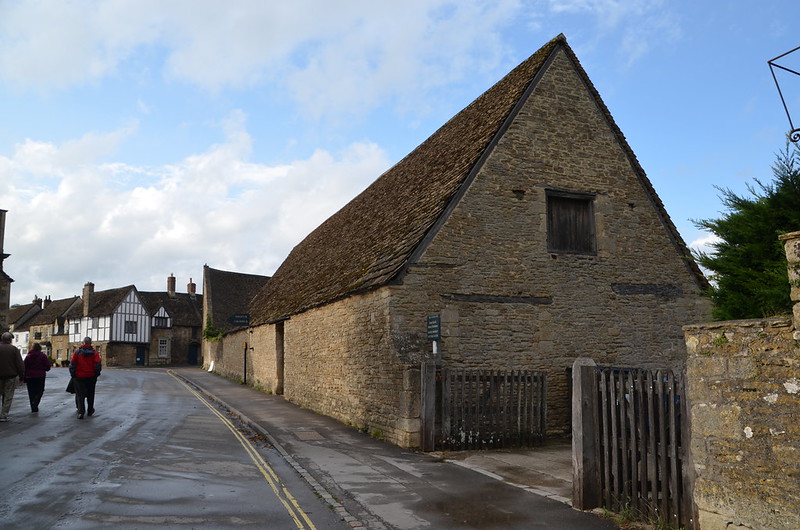Tommy, our coach driver, made the statement that we were in for a real treat if the rain held off. So true! Anna, our tour director, told us as we drove into the village that Lacock is mainly owned by the National Trust and that folks who rent there know that now and then the village will be made to appear as it would have been before modern times so that it could serve as a location for films or TV shows--the buildings range from medieval times to the 18th century. All of us who enjoyed taking photographs of the quaint buildings wished for no automobiles and soil covering the modern pavement.
I read this online: The village of Lacock dates back to the 13th Century when Lacock was a classic wool village. The outward appearance of the village is of this time, but Lacock is a normal living village complete with functioning school, public houses, church, bakery and post office.
And this, too: Lacock, we have learned, was a planned village, established for the estate workers of the abbey in the 13th century, and the village streets form a square. Lacock, on the southern edge of the Cotswolds, was once a centre of the medieval wool trade. Today it still reflects those times, and no TV aerials, overhead cables or yellow lines on its streets spoil the scene. The village started its life in Saxon times. Norman lords then ruled the area and built a church in honor of St. Cyriac. Lying on the direct London to Bath route, the village prospered, and the church was rebuilt in the Perpendicular style in the 15th century. (I didn't walk on the Church Street where the church is located.)

Lacock Abbey--we didn't have time to get any closer, so I'm glad that I got this photo of at least part of the building. Some interiors in Harry Potter and the Chamber of Secrets were filmed in the abbey--rooms were turned into Hogwarts school. The abbey was a major location in the film, The Other Boleyn Girl, while the village appeared in the BBC/A&E production of Pride and Prejudice.

Lacock's Manger Barn where all sorts of events are held. I like the look of the stones and the angle of the roof. That's a half-timbered house in the distance, on the corner of East Street and the High Street. The other pointed brown roof is on the Tithe Barn--more about it later in the blog.

A planned community? Aren't they all? Nice abbey image here.
ReplyDeletemust be some 30 years since I visited Laycock - nice to see your photos of the place
ReplyDeleteI've heard of this place before, and indeed, some of the architecture is quite familiar. Beautiful shots!
ReplyDeleteBeautiful village.
ReplyDeleteI remember Lacock. I went there years ago. At that time I think it was promoted as the prettiest village in England.
ReplyDelete